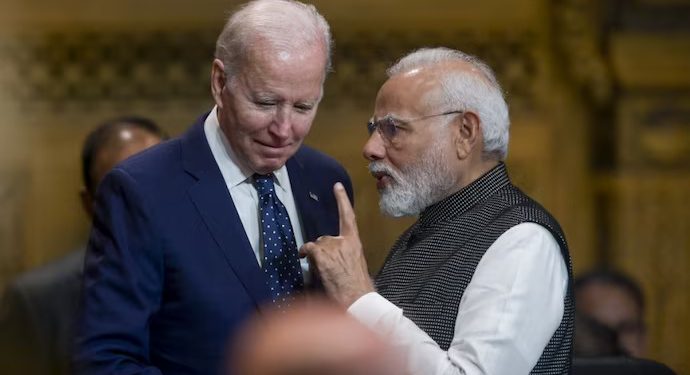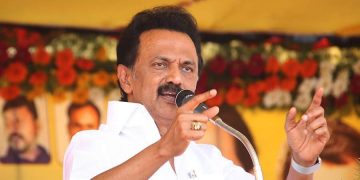The much publicised US visit of Prime Minister Narendra Modi beginning June 21 is supposedly about strengthening the two countries’ mutually beneficial economic, defence and strategic ties. Both Modi and US President Joe Biden are also poised to face their respective electorate soon. Getting re-elected is extremely important for both. Not just for personal politics but also what they both think they stand for. This seemingly prompts the two leaders to showcase the visit and resultant trade and defence agreements as a high point of their foreign policy success so as to enhance their public ratings and influence the electoral verdict at home.
Containment of China seems to be the main driving force behind the visit. Both countries see their strategic interests converge in taking on China which has become increasingly expansionist and ambitious on the global stage. For the US, China is its biggest competitor in the spheres of economic and defence influence, while India has been embroiled in territorial disputes in the Himalayas since the encounter between Indian and Chinese military forces in Galwan of Ladakh in 2020 that left 20 Indian soldiers dead. China’s close ties with Pakistan have also resulted in the China-Pakistan Economic Corridor (CPEC) as part of the Belt and Road Initiative that passes through a section of Kashmir occupied by Pakistan. This is an additional concern for India that may influence Delhi gravitating toward Washington.
Through its help to shore up India’s economic and defence capabilities, the US hopes to enlist the former’s support to tackle global challenges as part of its long-term interests. The US desperately needs to create a framework of deterrence to curb Chinese expansionism. From the example observed in Ukraine, the new US policy seems to have drastically changed from the past. Even as recent as Afghanistan, the US was mostly getting directly involved in wars that were fought on far shores. It is also possible that domestic pressures, both for the American leadership as well as its allies, is curtailing military intervention on foreign soil. Probably from that need was born Ukraine to contain Russia. Now with China too, it is possible that the West wants a proxy war led by Taiwan and India with Australia and Japan helping from the back. India therefore occupies an important position in this scheme of things of the US administration.
Against this backdrop, Biden will meet Modi on an official state visit in Washington D.C, which includes a South Lawn welcome, a state dinner, and an address to a joint session of Congress.
The US had banned Modi’s visit to the country for the pogrom against Moslems during Gujarat riots in 2002 when he was the state Chief Minister. But, things changed once he became the PM and the US accorded a red carpet welcome to him in September 2021, where he held a bilateral meeting with Biden. This is the miracle power of India as a vast ‘market’ and has nothing to do with policies on human rights.
The brouhaha over the visit might not be enough to push under the carpet criticisms against the Modi government over degradation of democratic values and free speech in India. The track record of Modi government in this regard is suspect in the eyes of many international bodies, including the prominent US Press watchdog Committee to Protect Journalists (CPJ). In a statement timed to coincide with Modi’s US visit, it said journalists critical of the Indian government and the ruling BJP have been “jailed, harassed and surveilled.” Since Modi came to power in 2014, there has been an increasing crackdown on India’s media, CPJ’s president Jodie Ginsberg has said. The CPJ has urged the US administration to take up the matter with Modi during his visit so that India lives up to its reputation and a free and independent media can function.






































